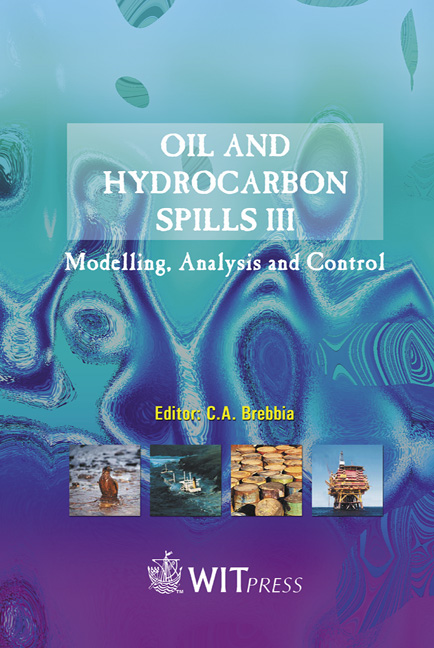Investigation On Organics In The Libyan Beach Sand And Water: Extraction, Spectroscopy And Gas Chromatography: Zuwaytinah To Al-Hareigah Region
Price
Free (open access)
Transaction
Volume
59
Pages
Published
2002
Size
352 kb
Paper DOI
10.2495/OIL020361
Copyright
WIT Press
Author(s)
L. H. Ali, S. A. El-Jawashi, A. A. Ejbali & M. J. Garbaj
Abstract
Investigation on organics in the Libyan beach sand and water: extraction, spectroscopy and gas chromatography: Zuwaytinah to Al- Hareigah region L. H. Ali, S. A. El-Jawashi, A. A. Ejbali & M.J. Garbaj Petroleum Research Centre, Tripoli, Libya. Abstract This paper gives the results of analyzing sixty samples, taken from twenty locations that are extending 900 kilometers along the eastern section of the Libyan Mediterranean shore. Three samples were taken from each location representing dry sand (ds), 3 to 4 meters away from water; wet sand (ws). obtained from under 1 meter depth and beach water (w); few meters away from shore. Determination and partial identification of organics in ds, ws and w were conducted using identical methods with those already published in Part-I The studied coastline in Part-III represents the region of least petroleum and petrochemical activities in comparison with the previous two parts. The results on organics, lowest and highest contents (in ppm), in the three types of samples, measured gravimetrically and spectrophotometrically {at A260 nm denoted as I and at A410nm, denoted as II} were as follows respectively: ds/ 42.72-475.86 {I: 2.20-31.30; II: 0.28-13.51} ws/ 53.85-303.70 {I: 2.59-31.64; II: 0.17-5.19) w/ 0.04-6.16 {I: 0.02-0.49; II: 0.00-0.04}. Noticeable atmospheric oxidation of the organic matter was observed in some of the samples, and was measured by a relative IR normalization method. Carbon number distribution in the ranges C11- C20, C21-C30, C31-C40 and C41-C45; in the three types of samples was measured by capillary GC.
Keywords





